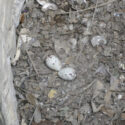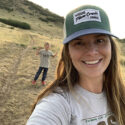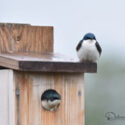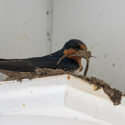 Photo ©
Keith Williams
Photo ©
Keith Williams

What’s Nesting Now?
For some of us, February is cold with scarcely any birdsong; but for others the nesting season is just getting started. Reports are trickling in from the southern states and California of Wood Ducks, Red-tailed Hawks, Eastern Bluebirds, Carolina Chickadees, Carolina Wrens, Black Vultures, Bald Eagles, and more starting to nest. Farther afield, we’re receiving reports from Bermuda, Israel, and Brazil (among others). In fact, we’re pleased to report that the first nest to fledge in 2023 (as reported so far to NestWatch) was that of a Picazuro Pigeon in southeastern Brazil. The nest fledged one young on January 28. Congratulations to our “first fledgling” of the year! We cannot wait to see what all of you find this year, and it’s always so much fun to watch the season rolling in like a wave moving north.
Found a nest? Submit it to NestWatch!

Nature and Well-being
Tina Phillips, assistant director of the Center for Engagement in Science and Nature at the Cornell Lab, and her collaborators, surveyed more than 3,200 adults in the U.S., half from the general public and half Cornell Lab members, in October 2020, 6 months into the COVID pandemic. Their findings, recently published in the journal People and Nature, suggest that during the pandemic, enjoying nature close to home, such as gardening, taking a walk, watching nature through a window, and birdwatching, was associated with the greatest sense of well-being, compared to longer, more intense nature excursions, or nature experienced second-hand through various media. It adds to a growing body of evidence that time in nature (e.g., observing birds) is beneficial to mental health.

New Chapter in Texas
Welcome to our newest NestWatch Chapter, Tarrant County NestWatch, located in Fort Worth, Texas!
Chapter coordinator Kimberlie Sasan is a certified Texas Master Naturalist who began monitoring nest boxes in 2018. She’s managed a network of volunteer nest monitors since then, and is excited to expand that network as an official NestWatch Chapter. If you live near the Dallas/Fort Worth area, consider contacting Kimberlie to get trained in nest-monitoring for this upcoming breeding season!

Save a Spot for Barn Swallows
Continuing with our monthly campaign to help reverse the declines of aerial insectivores, this month we are featuring the Barn Swallow. This inky blue swallow with a chestnut face, rufous breast, and deeply forked tail has a near-hemispheric breeding distribution and can often be found nesting on human-made structures (e.g., barns, homes, businesses, schools, etc.). To encourage nesting in appropriate places, you can attach a nest shelf to the outside wall of a building, just underneath the roofline. Download free plans for making a nest shelf (although even simpler designs will do). The best time to install a nest shelf is before the birds return to their breeding grounds, so don’t wait too long (mid-March is a good goal for installation).